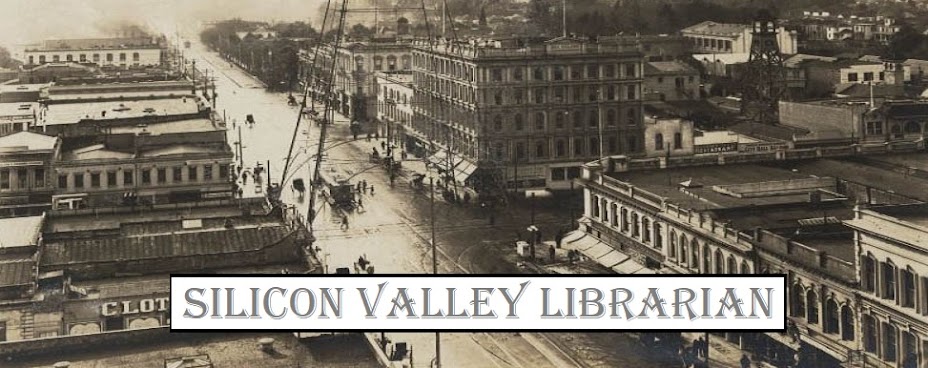In large libraries and research institutions, preserving, organizing and protecting collections falls to conservators (for high-value items), collections conservators (for items with informational value within a larger collection), or preservation administrators (who are responsible for the health of the entire set of collections held by an institution).
 |
| Preservation in Action (Some archival humor.) |
For Home Users:
Some of the professional techniques and tools used by archivists and conservators can be adopted by home users who wish to preserve their family books, comic books, documents, audio visual materials, photos, scrapbooks and albums.
Preservation techniques also extend to preserving personal digital memories and saving your personal email, plus digital movies, photos, voice files, and Web sites, then adapting those digital files so they work with emerging technologies and remain accessible with tomorrow's software and new electronic devices.
(See the section on software to organize your book titles, below.)
Common Enemies of Your Preserved Heirlooms:
Because libraries have been active in preserving collections for so many years, many organizations have specialized in various aspects of preservation based on the common enemies of most collections, which are listed below. (The links in each bullet point lead to more information on how to protect your treasures from damage.)
- Acids in old books, cardboard, and papers, causing paper to become brittle and discolored
- Pests and infestations
- Mold and Mildew
- Chemical reactions from wood shelving and wood finishes
- Pressure on books from improper storage
- Use of gums, glues, tapes, and other adhesives which degrade and discolor over time
- Improper handling and general deterioration due to age
- Use of non-cotton ribbons or acid-containing tubes and papers to store large, flat items like maps or newspapers
- Temperature, humidity, air quality, and wet books
- Local pollution
- Old nitrite film and negatives degrade and may spontaneously ignite if not stored in sealed, cold storage. Film and negatives degrade and generate fumes which can be unhealthy.
- Excess or improper Lighting
- Storage of items made with incompatible materials (one component causing the other to degrade) and textile storage issues (see pests)
- Confusion about the material composition of historic photos and their proper storage
- Audio recordings and media which have degraded or were not transferred to newer media
Online Preservation Tutorials and Resources:
- Conservation Center for Historic Artifacts - Resources for Preventive Conservation
- CoOl Conservation Online (Foundation of the American Institute for Conservation of Historic and Artistic Works)
- Cornell University Library - Preservation and Collection Maintenance Publications
- Cornell University Library - Digital Imaging Tutorial
- Digital Preservation Management (Cornell University)
- Establish a National Policy on Permanent Papers (In other words, a standard of manufacture for paper, so the paper will last over time.) (Library of Congress Report)
- Guide to Library Binding Standards (with instructions on book repair)(PDF) and more general instructions from the NDCC
- Heritage Preservation - Online Resources
- The Institute of Museum and Library Services - Guide to Online Resouces
- Library of Congress - Preservation Directorate
- Library Preservation and Conservation - Tutorial
- National Archives and Records Administration - Holdings Maintenance (see procedures to the right on this Web page)
- The National Film Preservation Foundation - Film Preservation Guide
- National Park Service - Conserv-O-Gram (by topic tutorials)
- National Park Service - Museum Management Program Publications
- Northeast Document Conservation Center - Preservation Leaflets
- The Preservation Department for Stanford University Libraries & Academic Information - Resources (SULAIR)
BookCat - Tracks your books, creates reports, and plays well with LT:
Last year I worked with a small library which had only $300 in its annual budget, yet a passionate group of volunteers who created a fairly varied collection, and, who effectively ran the entire operation (and got others to donate a lot of books to grow their collection.)
I recommended that they use LibraryThing as their online catalog, then use BookCat (which would download their entire collection directly from LibraryThing into a BookCat database), to handle their in-house circulation functions and reports. (They would just need to do a monthly download of any future books added to LT, to keep the BC database up-to-date.) Altogether, with the purchase of a CueCat, I think they spent under $75 to fully automate their small library. Last I heard, they were all having fun adding comments and reviews to their LT collection online. Victory!
(Note: I am not affiliated with either of these products, but am so grateful that they provided a solution for some small libraries who operate, basically, on the best wishes of others and almost non-existent budgets.)
More options and reviews:
For more software choices, I particularly liked a Web page by Ellen Bosman, Director of Technical Services, New Mexico State University Library, entitled, "Software Choices for Church Libraries," in which she reviews price ranges and options, with an honest assessment of the needs of small libraries almost anywhere, in any type of institution. I think she is right on the money and offers good counsel on her site.
---Catherine Alexander Bright, SiliconValleyLibrarian.org
